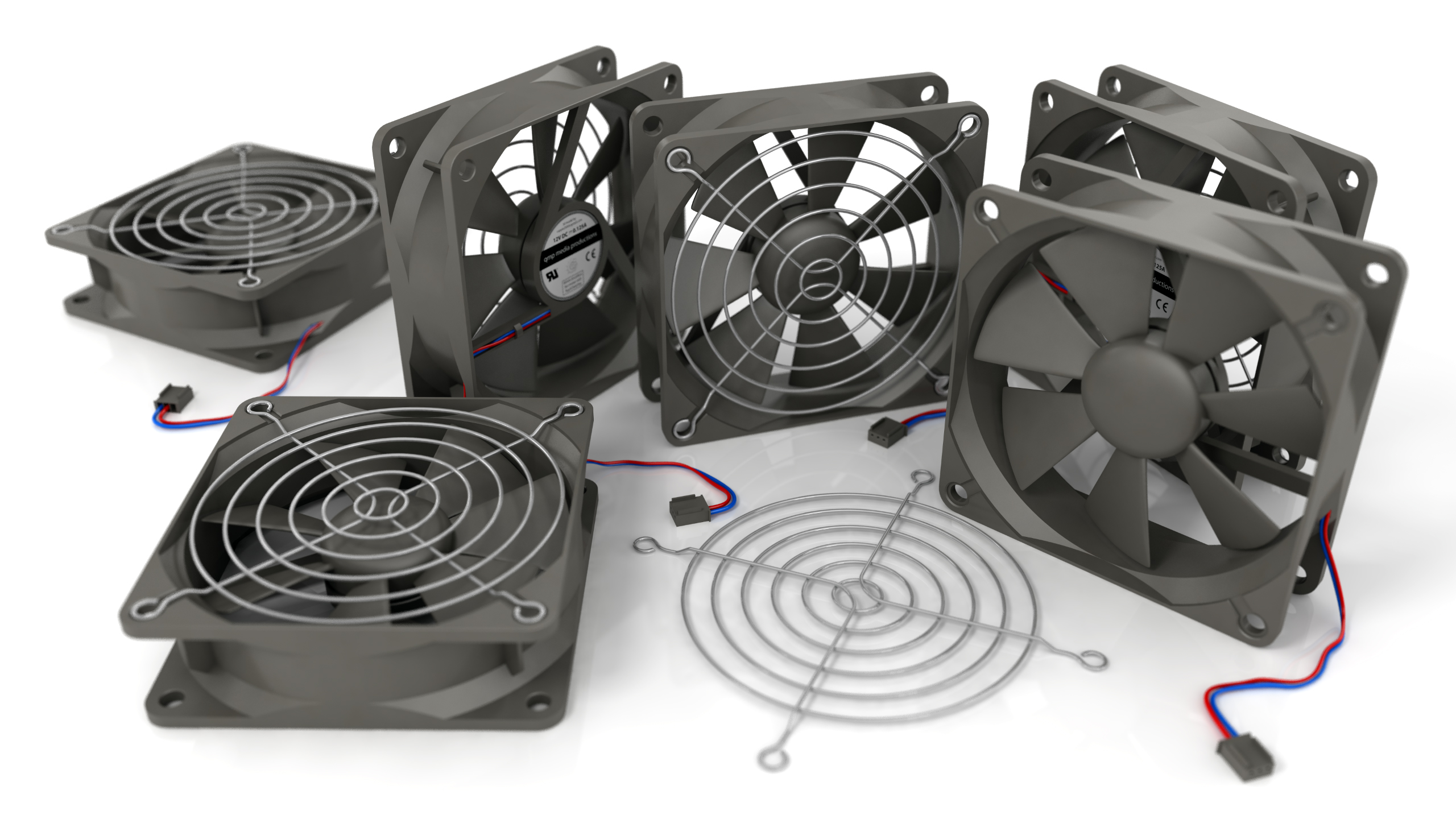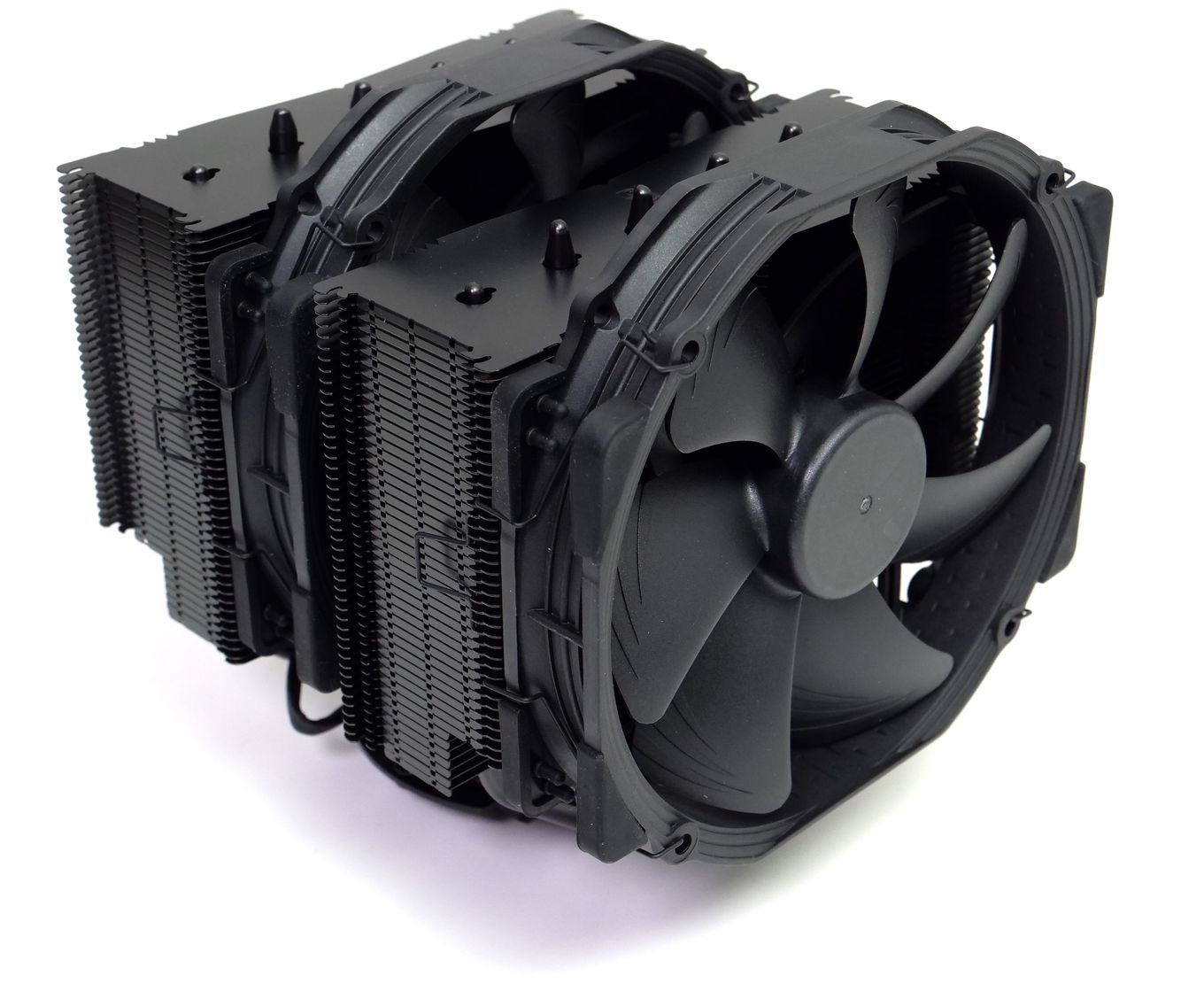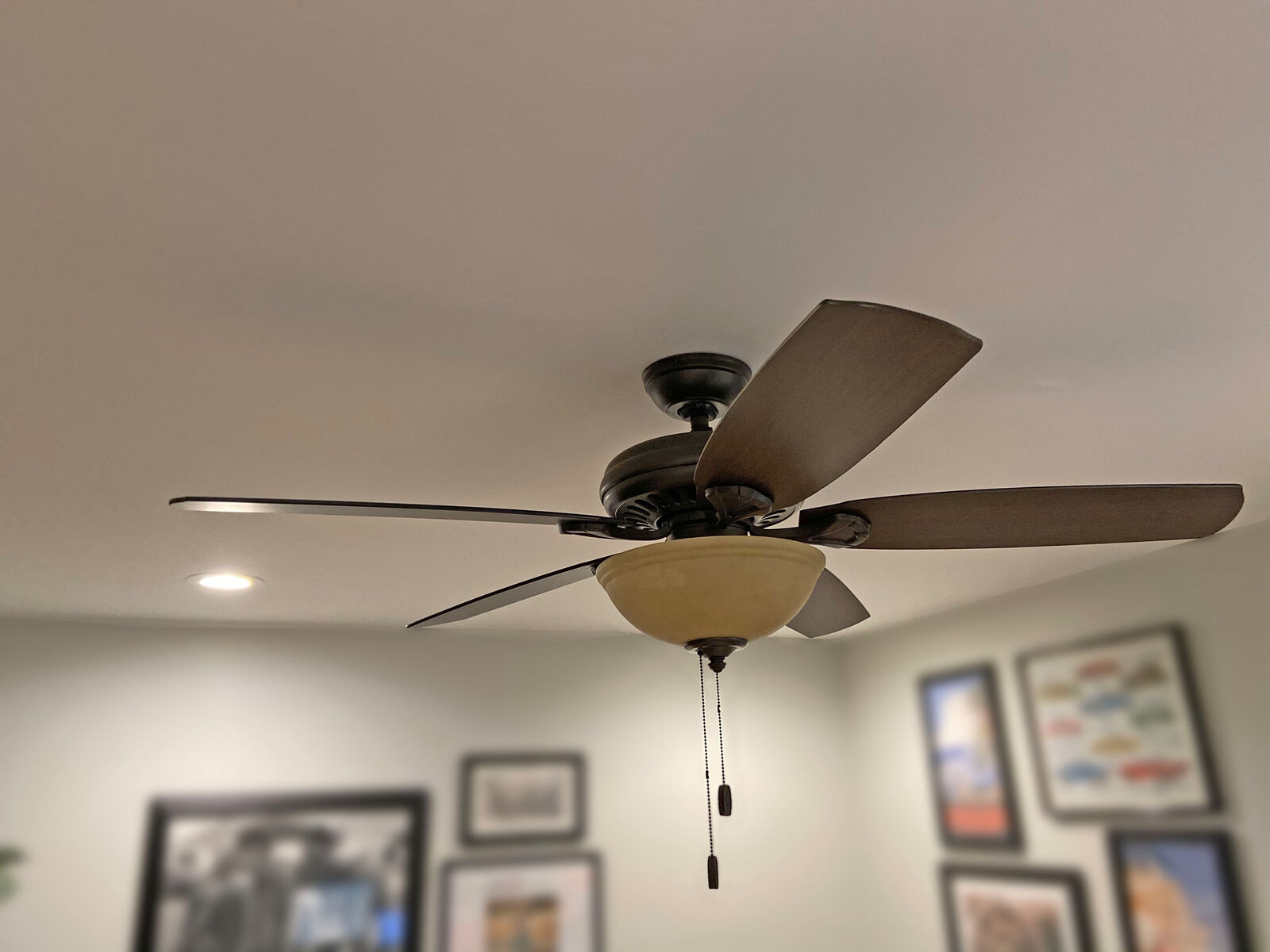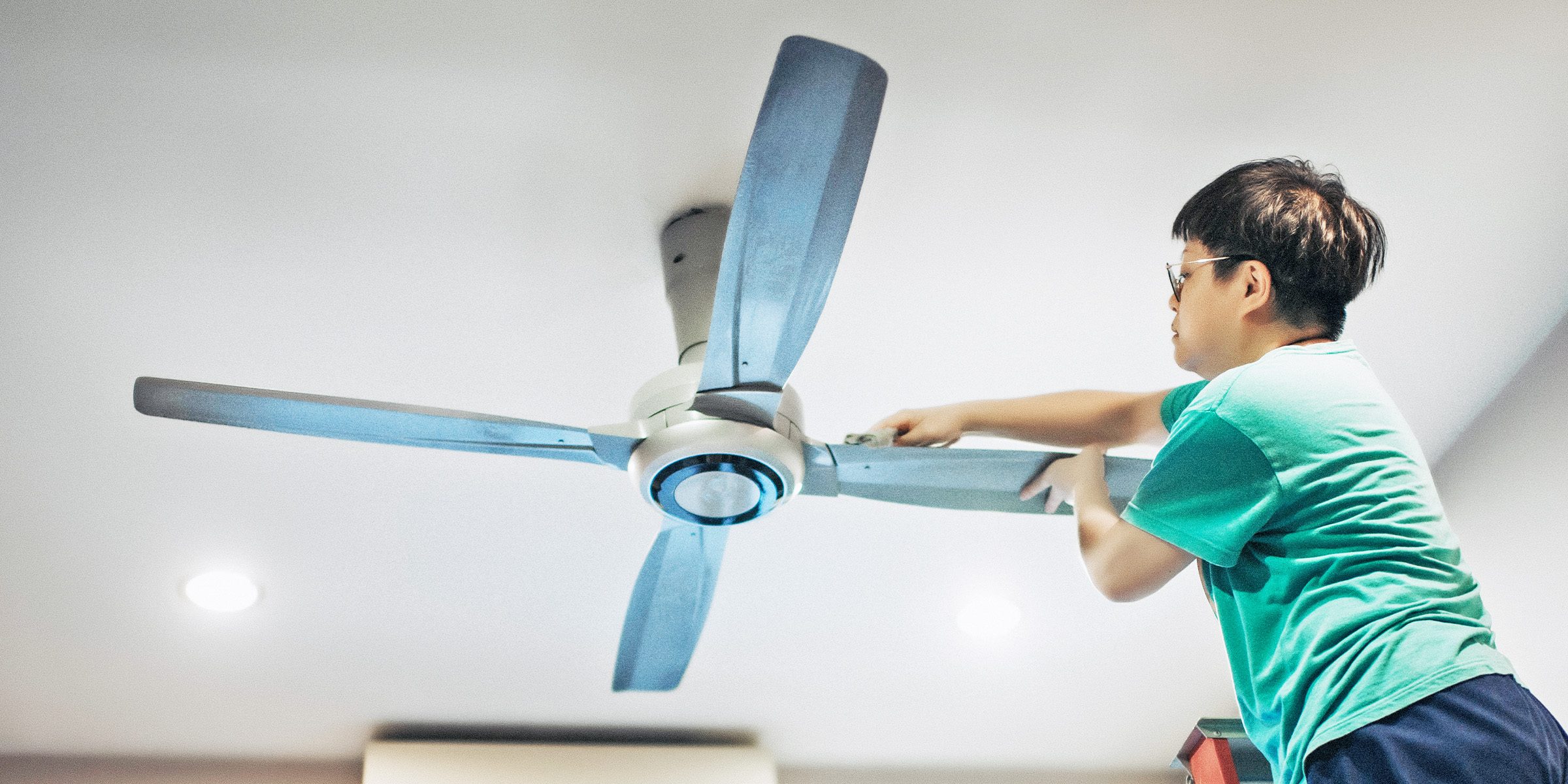Home>Articles>What Is the Best Way to Determine if a CPU Fan Is Spinning Properly?


Articles
What Is the Best Way to Determine if a CPU Fan Is Spinning Properly?
Modified: August 25, 2024
Learn how to determine if your CPU fan is spinning properly with these informative articles. Ensure optimal performance and prevent overheating.
(Many of the links in this article redirect to a specific reviewed product. Your purchase of these products through affiliate links helps to generate commission for Storables.com, at no extra cost. Learn more)
Introduction
The CPU fan plays a critical role in keeping your computer’s processor cool and preventing overheating. Over time, the fan’s performance can deteriorate, leading to potential hardware damage if not addressed promptly. Therefore, it is essential to determine if your CPU fan is spinning properly to ensure optimal cooling efficiency.
In this article, we will explore various methods to assess the performance of your CPU fan. From visual inspections to software monitoring, we will guide you through step-by-step instructions on how to determine if your CPU fan is working as it should.
By regularly checking your CPU fan, you can identify any issues early on and take appropriate actions to prevent potential damage to your computer. So, let’s get started and learn the best ways to determine if your CPU fan is spinning properly.
Key Takeaways:
- Regularly checking your CPU fan’s performance through visual inspection, listening for fan noise, and using software and hardware tools is crucial to prevent overheating and ensure optimal system performance.
- Testing your CPU fan’s performance under load with stress testing software helps identify potential cooling issues and ensures efficient cooling in real-world usage scenarios.
Read more: What Is a CPU Fan
Importance of Checking CPU Fan Performance
The CPU fan is responsible for dissipating heat generated by the processor. Without proper cooling, the CPU can quickly heat up, leading to decreased performance, system instability, and even permanent damage to the hardware. That’s why it’s crucial to regularly check the performance of your CPU fan.
A properly functioning CPU fan ensures that the processor stays within the recommended temperature range, maximizing its performance and lifespan. By assessing the fan’s performance, you can promptly detect any issues and take appropriate measures to prevent overheating and potential hardware failure.
Over time, the CPU fan may accumulate dust and debris, causing it to spin slower or become obstructed. This can significantly impact its cooling efficiency and lead to increased heat levels within the computer. In addition, a fan that is not spinning at the appropriate speed can indicate a malfunctioning motor or other hardware problems.
Regularly checking your CPU fan performance allows you to address any issues before they escalate. By ensuring that the fan spins properly, you can minimize the risk of overheating and maintain optimal system performance.
Moreover, a malfunctioning CPU fan can be an early warning sign of other underlying hardware or software problems. It can indicate issues with the fan’s power supply, faulty connectors, or even a failing motherboard. By identifying these issues early on, you can take necessary steps to resolve them and avoid costly repairs or replacements down the line.
Overall, monitoring the performance of your CPU fan is a crucial aspect of computer maintenance. It safeguards your system from overheating, prolongs the lifespan of your hardware, and helps to ensure the smooth and reliable operation of your computer.
Visual Inspection
One of the simplest ways to determine if your CPU fan is spinning properly is through a visual inspection. This method allows you to physically observe the fan’s movement and check for any abnormalities.
To begin, turn off your computer and unplug it from the power source. Open the case to gain access to the internal components. Locate the CPU fan, which is typically positioned on top of the processor heatsink.
Inspect the fan blades for any signs of damage, such as cracks or bent edges. Dust and debris can also accumulate on the blades, which can impede their rotation. Use a can of compressed air or a soft brush to gently clean the fan blades and remove any obstructions.
Next, power on your computer while keeping the case open. Watch the CPU fan closely and observe its movement. A properly functioning fan should rotate steadily without any interruptions or wobbling. It should also spin fast enough to adequately cool the processor. If you notice any irregularities, such as an uneven or sluggish rotation, it may indicate a problem with the fan’s motor or bearings.
Additionally, check the fan’s connection to ensure it is securely attached to the motherboard. Loose or faulty connections can disrupt the fan’s performance or cause it to stop spinning altogether.
During the visual inspection, it’s also essential to monitor the overall temperature of your computer. Use a hardware monitoring tool or check the BIOS temperature readings to ensure that the CPU is within the recommended temperature range. An excessively high temperature coupled with a poorly functioning CPU fan could signify a cooling problem that needs immediate attention.
By conducting a visual inspection, you can quickly identify any visible issues with your CPU fan. However, it’s important to note that this method only provides an initial assessment and may not detect more subtle performance issues. Therefore, it’s advisable to utilize other methods, such as software monitoring or diagnostic tools, to obtain a more comprehensive understanding of your CPU fan’s performance.
Listening for Fan Noise
Another way to determine if your CPU fan is spinning properly is by listening for any unusual sounds it may produce. A properly functioning fan should operate quietly, with a consistent and smooth humming sound. Any abnormal or loud noises could indicate a problem with the fan’s motor or bearings.
To evaluate the fan noise, start by turning off any background noise in the room to ensure a quiet environment. Power on your computer and listen closely to the CPU fan. Pay attention to the pitch, volume, and any irregularities in the sound it emits.
If you hear grinding, clicking, or scraping sounds, it may suggest that the fan’s bearings are worn out or damaged. This can affect the fan’s rotation and cooling performance. In such cases, it is advisable to replace the fan as soon as possible to prevent further damage to the hardware.
On the other hand, if you hear a loud and constant whirring noise, it could indicate that the fan is running at a high speed. While this may not necessarily indicate a malfunction, it’s important to check the CPU temperature and ensure that it remains within the acceptable range. If the temperature is excessively high, it could mean that the fan is struggling to cool the processor effectively.
Additionally, if the fan produces intermittent noises or starts and stops abruptly, it may indicate an issue with the fan’s power supply or the motherboard’s control of the fan speed. In such cases, checking the fan’s connection and adjusting the fan speed settings in the BIOS may help resolve the problem.
It’s worth noting that some fans, especially those with higher RPMs, might naturally produce more noise. However, if you notice any significant changes in the fan noise or hear unusual sounds, it is essential to investigate further to ensure optimal CPU cooling performance.
Listening for fan noise provides a quick and straightforward method to assess the performance of your CPU fan. However, it is recommended to combine this approach with other methods, such as visual inspection and software monitoring, to obtain a comprehensive evaluation.
Checking Fan Speed in BIOS
The BIOS (Basic Input/Output System) is a firmware that resides on your computer’s motherboard and controls various hardware components, including the CPU fan. Many BIOS versions provide the option to check the fan speed directly from the system settings, making it a convenient method to assess the fan’s performance.
To check the fan speed in the BIOS, start by restarting your computer and entering the BIOS setup. The key to access the BIOS may vary depending on your computer’s manufacturer, but it is often the “Delete,” “F2,” or “F10” key. Refer to your computer or motherboard’s documentation for the specific key required to access the BIOS.
Once in the BIOS, navigate to the “Hardware Monitoring,” “PC Health,” or a similar section where system information is displayed. Look for the CPU fan speed or fan RPM (Revolutions Per Minute) value.
Most modern BIOS versions provide a real-time display of the fan speed, allowing you to monitor its performance in real-time. The fan speed is usually measured in RPM, with higher values indicating faster rotation and better cooling performance. Ensure that the fan speed falls within the acceptable range recommended by your computer’s manufacturer.
If you notice that the fan speed is unusually low or not displayed at all, it may indicate a problem with the fan’s connection or the motherboard’s ability to detect it. In such cases, double-check the fan’s connections to ensure they are secure and properly plugged into the motherboard. If the issue persists, consult the computer’s manufacturer or a professional technician for further assistance.
Checking the fan speed in the BIOS provides a reliable method to evaluate the performance of your CPU fan. By monitoring the fan speed in a controlled environment directly from the BIOS, you can ensure that the fan is spinning at an appropriate rate to cool the CPU effectively.
However, it’s important to note that not all BIOS versions offer the option to check fan speed. In such cases, you can rely on other methods, such as software monitoring tools or hardware diagnostic tools, to assess the performance of your CPU fan.
Check the RPM (revolutions per minute) of the fan using monitoring software or BIOS. If the RPM is within the normal range for your CPU fan, it is likely spinning properly.
Read more: How to Replace a CPU Fan
Using Software to Monitor Fan Speed
In addition to checking the fan speed in the BIOS, you can also utilize software applications to monitor the performance of your CPU fan. These software tools provide real-time information about various system components, including the fan speed, allowing for easy and convenient monitoring.
There are several software options available that can help you monitor the fan speed, such as SpeedFan, HWMonitor, and Open Hardware Monitor, among others. These tools are compatible with different operating systems and offer a user-friendly interface to view critical system information.
To use software to monitor fan speed, start by downloading and installing the software of your choice. Once installed, launch the application and navigate to the section where fan speed is displayed.
In most cases, the software will automatically detect the CPU fan and display its speed in RPM or in percentage relative to its maximum speed. Take note of the fan speed and ensure that it falls within the normal range recommended by your hardware manufacturer. Any significant deviations from the expected values may indicate a problem with the fan’s performance.
Software monitoring tools can also provide additional information about the fan, such as the fan’s control mode, temperature thresholds, and the ability to adjust fan speed settings. This level of customization allows you to optimize the fan speed based on your specific cooling needs.
Moreover, some software applications offer the option to create fan speed profiles, which enable you to set different fan speed settings based on specific conditions, such as temperature or system load. This feature can help maintain an optimal balance between cooling performance and noise levels.
Using software to monitor fan speed provides a convenient and comprehensive method to assess the performance of your CPU fan. The real-time data provided by these tools allows you to keep a close eye on the fan’s rotation and make informed decisions to ensure efficient CPU cooling.
However, it’s important to note that software monitoring tools may not be compatible with all computer hardware or operating systems. Additionally, they rely on accurate reporting from the system sensors, so occasional discrepancies may occur. Therefore, it’s advisable to cross-reference the results with other methods, such as visual inspection or BIOS readings, to obtain a more accurate assessment of your CPU fan’s performance.
Using Hardware Diagnostic Tools
In addition to visual inspection and software monitoring, another effective method to determine if your CPU fan is spinning properly is by using hardware diagnostic tools. These tools provide in-depth analysis of various hardware components, including the CPU fan, allowing for a comprehensive assessment of its performance.
There are several hardware diagnostic tools available, such as AIDA64, CPU-Z, and HWiNFO, among others. These tools are designed to provide detailed information about your computer’s hardware, including temperature readings, fan speeds, and other system parameters.
To use hardware diagnostic tools to check your CPU fan, start by downloading and installing the preferred tool onto your computer. Once installed, launch the application and navigate to the section where fan speed information is displayed.
Hardware diagnostic tools typically provide real-time data on various system components, including the CPU fan. You can monitor the fan speed in RPM or percentage relative to its maximum speed and ensure that it falls within the acceptable range recommended by your hardware manufacturer.
Furthermore, some diagnostic tools offer the ability to run stress tests to assess the fan’s performance under load. These tests simulate heavy usage scenarios, putting a strain on the CPU and causing the fan to ramp up its speed. By monitoring the fan’s behavior during these tests, you can evaluate its cooling capability and determine if it is functioning optimally.
Additionally, hardware diagnostic tools often provide detailed information about the fan’s control mode, temperature thresholds, and the ability to customize fan profiles. This allows you to fine-tune the fan speed settings based on your specific cooling requirements.
Using hardware diagnostic tools provides a comprehensive and accurate method to evaluate the performance of your CPU fan. These tools offer real-time monitoring, detailed hardware information, and the ability to stress test your system, allowing for a thorough assessment of the fan’s functionality.
However, it’s important to note that not all hardware diagnostic tools are compatible with every computer hardware or operating system. Additionally, some tools may require advanced technical knowledge to interpret the results effectively. Therefore, it’s advisable to consult the tool’s documentation or seek professional assistance if needed.
Testing Fan Performance Under Load
One of the crucial aspects of determining if your CPU fan is spinning properly is to test its performance under load. A fan that works well at idle or low usage may not be able to handle higher temperatures and increased CPU workload efficiently. By testing the fan under load, you can assess its cooling capabilities in real-world scenarios.
To test the fan performance under load, you can utilize stress testing software such as Prime95, AIDA64, or IntelBurnTest. These tools put a high demand on your CPU, causing it to generate more heat and prompting the fan to spin faster to maintain optimal temperatures.
Before running a stress test, ensure that your computer is properly cooled and dust-free. Remove any obstructions that may hinder the airflow or increase the internal temperature. It’s also a good idea to monitor the CPU temperature during the test, either using software monitoring tools or hardware diagnostic tools, to ensure that it remains within safe limits.
Once you’re ready, launch the stress testing software and select the appropriate test option. The software will put a significant load on your CPU, causing it to heat up rapidly. Monitor the fan speed and listen for any unusual noises during the test.
A properly functioning fan under load should spin faster, increasing its RPM to adequately cool the CPU. It should maintain a consistent and stable speed without any sudden drops or fluctuations. If the fan struggles to keep up with the increased workload or experiences irregular speed changes, it may indicate a problem with its performance.
Additionally, pay attention to the CPU temperature. If the fan is unable to cool the processor effectively, the temperature may rise to potentially dangerous levels. If you notice a significant temperature increase or the CPU exceeding safe limits, it could indicate a cooling issue that requires immediate attention.
By testing the fan performance under load, you can ensure that it can handle the demands of your computer’s workload effectively. This helps to prevent overheating and ensures the longevity and performance of your CPU.
It’s worth noting that stress testing can put a significant strain on your CPU and increase its temperature. Therefore, it’s important to use caution when conducting these tests and monitor the temperature closely to prevent any potential damage to your hardware.
Conclusion
Determining if your CPU fan is spinning properly is an essential aspect of computer maintenance. By ensuring that the fan operates efficiently, you can prevent overheating, maximize the performance of your CPU, and extend the lifespan of your computer hardware.
In this article, we explored several methods to assess the performance of your CPU fan. Visual inspection allows you to physically examine the fan for any damage or obstructions. Listening for fan noise helps you detect any unusual sounds that could indicate motor or bearing issues. Checking the fan speed in the BIOS provides real-time information on its rotation rate. Software monitoring tools offer a convenient way to monitor the fan speed and customize its settings. Finally, hardware diagnostic tools provide in-depth analysis of the fan’s performance, including stress testing capabilities.
To obtain the most accurate evaluation, it is recommended to utilize a combination of these methods. Through a comprehensive approach, you can identify any potential problems early on and take appropriate measures to address them.
Remember to maintain a clean and dust-free environment for your computer, as dust accumulation can impede the fan’s rotation and hinder cooling efficiency. Regularly clean the fan blades and ensure that the fan connections are secure.
It is important to note that if you encounter any significant issues with your CPU fan, such as grinding noises, irregular speed changes, or excessive temperatures, it is recommended to seek professional assistance or consult the manufacturer for troubleshooting and potential fan replacement.
By regularly checking the performance of your CPU fan, you can ensure that your computer runs optimally and reduce the risk of hardware damage. A properly functioning CPU fan not only promotes efficient cooling but also enhances the overall reliability and longevity of your computer system.
So, take the time to evaluate your CPU fan using the methods outlined in this article, and enjoy a cooler, more efficient, and reliable computing experience.
Frequently Asked Questions about What Is The Best Way To Determine If A CPU Fan Is Spinning Properly?
Was this page helpful?
At Storables.com, we guarantee accurate and reliable information. Our content, validated by Expert Board Contributors, is crafted following stringent Editorial Policies. We're committed to providing you with well-researched, expert-backed insights for all your informational needs.















0 thoughts on “What Is the Best Way to Determine if a CPU Fan Is Spinning Properly?”